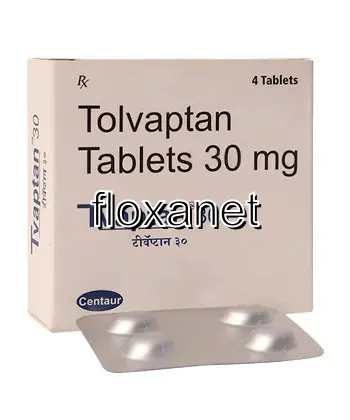| Package | Dosage | Price | Price per Dose | |
|---|---|---|---|---|
| Dosage: 15mg | ||||
| 180 pill | 15mg | $1,474.04 | $8.19 | |
| 120 pill | 15mg | $999.35 | $8.33 | |
| 90 pill | 15mg | $762.00 | $8.47 | |
| 60 pill | 15mg | $516.32 | $8.61 | |
| 30 pill | 15mg | $262.32 | $8.74 | |
| 20 pill | 15mg | $177.65 | $8.88 | |
| 10 pill | 15mg | $90.21 | $9.02 | |
| Dosage: 30mg | ||||
| 120 pill | 30mg | $1,301.93 | $10.85 | |
| 90 pill | 30mg | $993.79 | $11.05 | |
| 60 pill | 30mg | $674.55 | $11.24 | |
| 30 pill | 30mg | $340.05 | $11.34 | |
| 20 pill | 30mg | $229.01 | $11.45 | |
| 10 pill | 30mg | $115.19 | $11.52 | |

Tolvaptan Description
Overview of Tolvaptan
Tolvaptan is a medication primarily used to treat specific medical conditions related to fluid retention and electrolyte imbalances. It belongs to the class of drugs known as vasopressin receptor antagonists, which work by blocking the action of vasopressin, a hormone responsible for controlling water retention in the body. This mechanism helps to promote the excretion of excess water without significantly affecting electrolyte levels, making Tolvaptan a valuable treatment option for certain conditions. The medication is typically prescribed under medical supervision, and its effectiveness depends on proper dosage and adherence to the treatment plan.
Uses and Indications
Tolvaptan is most commonly prescribed for the treatment of hyponatremia, a condition characterized by low sodium levels in the blood. Hyponatremia can occur in various medical conditions, such as heart failure, syndrome of inappropriate antidiuretic hormone secretion (SIADH), and cirrhosis. By increasing water excretion, Tolvaptan helps restore normal sodium levels and alleviates symptoms like nausea, confusion, and seizures. Additionally, Tolvaptan is approved for use in managing autosomal dominant polycystic kidney disease (ADPKD). In ADPKD, it works to slow down the growth of cysts in the kidneys, helping to preserve kidney function over time. The medication's dual purpose makes it a distinctive option in treating both fluid imbalance and kidney disease progression.
How Tolvaptan Works
The action of Tolvaptan centers on its ability to antagonize vasopressin V2 receptors located in the kidneys. Vasopressin normally binds to these receptors, promoting water reabsorption in the collecting ducts of the kidneys. When Tolvaptan blocks these receptors, this process reduces water reabsorption, leading to increased water excretion, known as aquaresis. This selective mechanism allows for the removal of free water without significant sodium loss. As a result, Tolvaptan effectively corrects hyponatremia and reduces fluid overload in the body. Its targeted approach minimizes many of the side effects associated with non-specific diuretics, though careful monitoring remains essential during treatment.
Potential Benefits and Effectiveness
Many patients report significant improvements in symptoms related to fluid retention when using Tolvaptan. For individuals with hyponatremia, normalization of sodium levels often leads to relief from neurological symptoms like confusion, headaches, and fatigue. In patients with ADPKD, the medication has been shown to slow the progression of kidney cyst growth. Clinical studies have demonstrated that long-term use of Tolvaptan can help preserve kidney function and delay the need for dialysis or transplantation. However, the benefits are highly dependent on appropriate management, including dosage adjustments and regular medical check-ups.
Possible Side Effects and Precautions
While Tolvaptan is generally well-tolerated, it can cause side effects in some cases. Common adverse reactions include thirst, dry mouth, increased urination, and weakness. Some patients may experience symptoms of dehydration or electrolyte imbalances if the medication is not carefully monitored. Serious side effects, although rare, include liver injury, which requires routine liver function tests during treatment. Patients with underlying liver disease or other significant health issues should discuss potential risks thoroughly with their healthcare provider before starting therapy. It is also crucial to follow prescribed dosages and to keep track of any unusual symptoms during treatment.
Consultation and Usage Considerations
Preparing to begin Tolvaptan involves detailed consultation with a healthcare professional. It’s essential to have baseline liver tests and to undergo regular monitoring throughout the course of treatment. Patients should be mindful of the signs of dehydration and electrolyte disturbances and report any adverse reactions promptly. Since Tolvaptan impacts water and electrolyte balance, patients are advised to adjust fluid intake as instructed by their doctor. Moreover, combining Tolvaptan with certain medications or health conditions may require additional precautions. As with all prescribed drugs, adherence to the recommended dosage and medical advice maximizes efficacy and safety.
